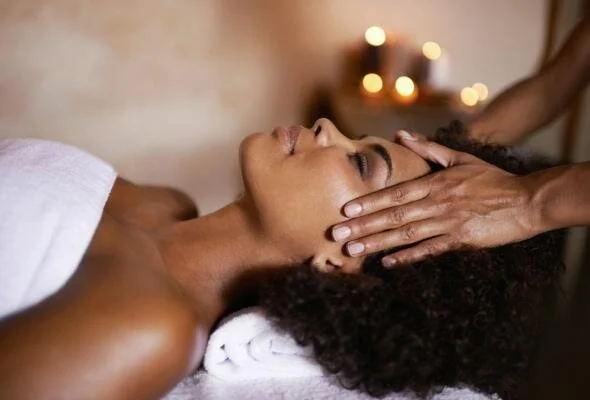Six days you shall labor, but on the seventh day you shall rest; even during the plowing season and harvest you must rest. (Exodus 34:21)
Getting a massage used to be considered a luxury among the rich and upper-middle class, or a self-reward for the middle class. However, throughout the last 30 years, getting a massage has become a necessary part of our everyday life. Many people have come to realize that getting a massage does a body good! Some clients get their massages monthly, bi-weekly, or weekly. The frequency of massages depends on various factors. Factors such as economics, affordability, health, and access.
The history of Massage Therapy as a tool for healing and wellness dates to over 4, 000 years in China. It was introduced in the western world sometime around the 4th century B.C during the time of Hippocrates, the “Father of Medicine”. It has been said that Hippocrates wrote that doctors should have knowledge of many things including “rubbing”. The ancient Greek word anatripsis for massage means kneading and rubbing. However, the foundation of Modern, Scientific Massage Therapy is due to the innovation of Per Henrik Ling from Sweden. He created a system integrated with massage, active exercise movements and passive exercise movements. In 1813, he established an institute to teach his newly created method. However, it was not until the 1850s that Modern Massage Therapy was introduced to the United States, by George and Charles Taylor, two brothers who were doctors in New York.
Several years after the first clinic opened in the United States, this healing practice waned in popularity and as a viable tool for healing. It resurfaced in the 1960s. There are several benefits to Massage Therapy as a tool for healing. These benefits are a broad spectrum and there are many doctors and other Health Practitioners who are proponents of this practice. Some of these benefits include improved blood circulation, the flow of the lymph nodes, reduced muscular tension, nervous system stimulation or sedation, and progression of tissue healing from either surgery or a wound. Below are just some of the positive effects of including Massage Therapy as a regular practice in your Wellness routine.
reduction of muscle tension and stiffness
relief of muscle spasms
greater flexibility and range of motion
increase of the ease and efficiency of movement
relief of stress and aid in relaxation
promotion of deeper and easier breathing
improvement of the circulation of blood and movement of lymph
relief of tension-related conditions, such as headaches and eyestrain
promotion of faster healing of soft tissue injuries, such as pulled muscles and sprained ligaments, and reduction in pain and swelling related to such injuries
reduction in the formation of excessive scar tissue following soft tissue injuries
enhancement in the health and nourishment of skin
improvement in posture through changing tension patterns that affect posture
reduction in stress and as a stress management tool
creation of a feeling of well-being
reduction in levels of anxiety
increase in awareness of the mind-body connection
promotion of a relaxed state of mental awareness
Not only does Massage Therapy have the above effects but there are several clinical benefits as well. Clinical benefits such as to reduce anxiety, improve pulmonary function for asthma patients, increase weight and improve motor development in premature infants, building the immune system, allergies, reduce stress, arthritis, bronchitis, carpal tunnel, chronic or temporary pain, circulatory problems, depression, digestive disorders, among many other disorders or chronic ailments. There are several types of massages. Below are some of the most common.
Swedish massage uses a system of long gliding strokes, kneading, and friction techniques on the more superficial layers of muscles, generally in the direction of blood flow toward the heart, and sometimes combined with active and passive movements of the joints. It is used to promote general relaxation, improve circulation, range of motion, and relieve muscle tension. Swedish massage is the most common form of massage.
Deep tissue massage is used to release chronic patterns of muscular tension using slow strokes, direct pressure, or friction directed across the grain of the muscles. It is applied with greater pressure and to deeper layers of muscle than the Swedish form, which is why it is called deep tissue and is effective for chronic muscular tension.
Sports massage uses techniques that are similar in Swedish and deep tissue but are specially adapted to deal with the effects of athletic performance on the body and the needs of athletes regarding training, performing, and recovery from injury.
Neuromuscular massage is a form of deep massage that is applied to individual muscles. It is used primarily to release trigger points (intense knots of muscle tension that refer pain to other parts of the body), and to increase blood flow. It is often used to reduce pain. Trigger point massage and myotherapy are similar forms.
So, what are you waiting for? Find a Massage Therapist and schedule your massage today.
Peace and Blessings, Paz y Bendiciones, Paix et Bénédictions
Coach Alicia, your Multicultural Health Coach
Greene, Elliot. "Massage Therapy." The Gale Encyclopedia of Alternative Medicine, edited by Deirdre S. Hiam, 5th ed., vol. 3, Gale, 2020, pp. 1719-1724. Gale Health and Wellness, https://link-gale-com.proxy.ulib.uits.iu.edu/apps/doc/CX7947800571/HWRC?u=iulib_iupui&sid=HWRC&xid=0152df33.


